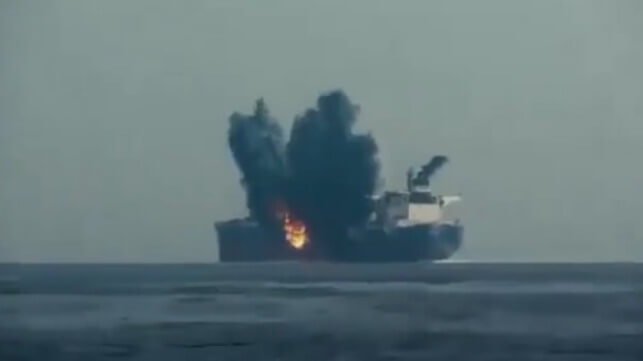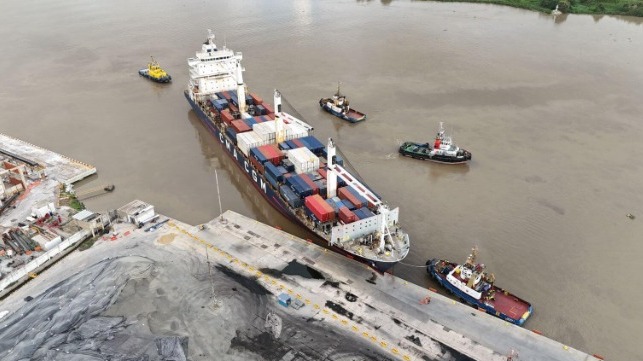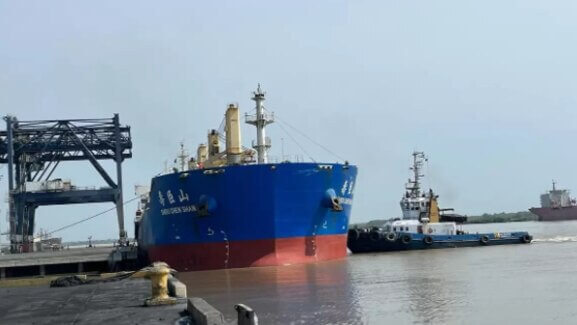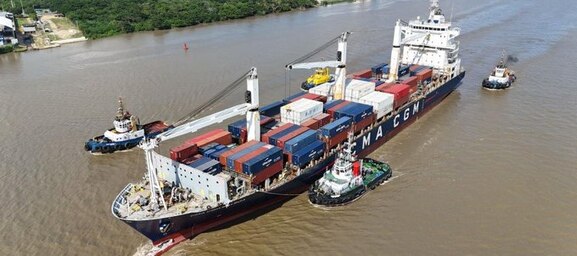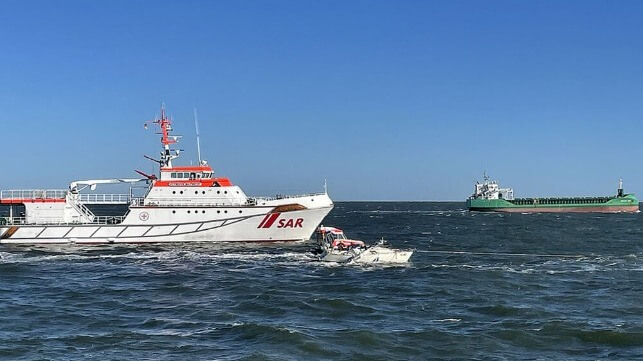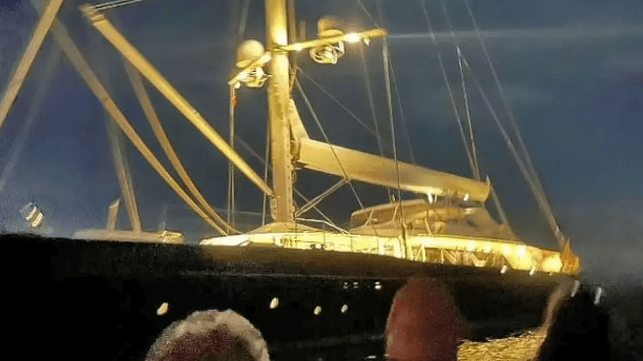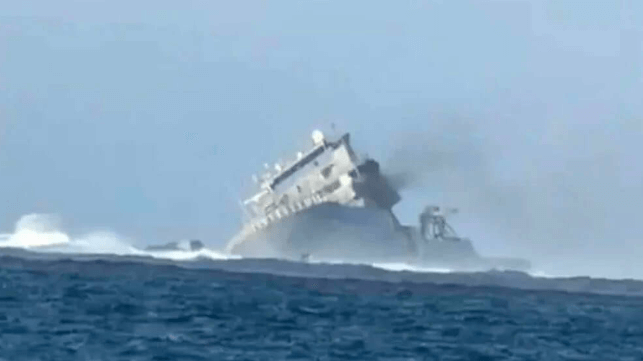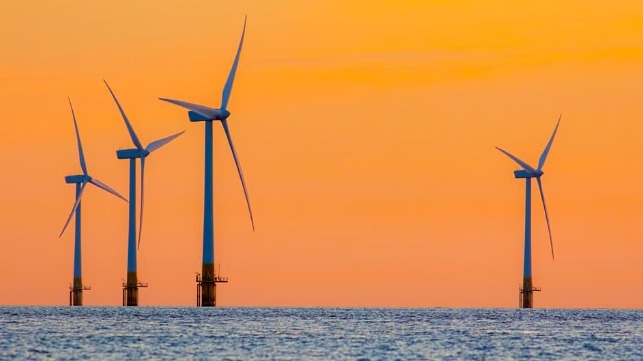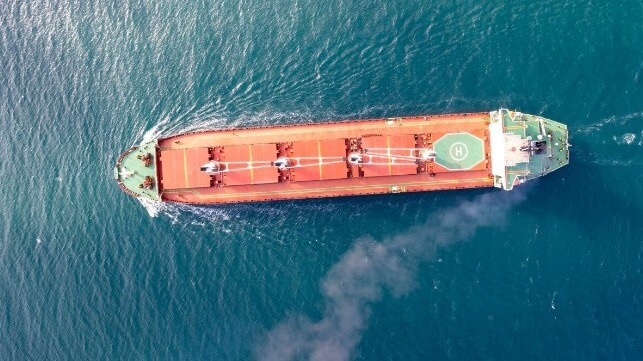Bottled up in the Black Sea Russia is Having a Dreadful Naval War
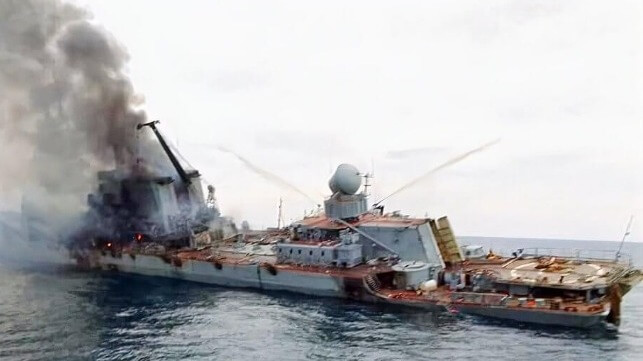
[By Colin Flint]
The ongoing conflict between Russia and Ukraine has played out largely on land and in the air. It is a bitterly contested, grueling ground war, accompanied by brutal Russian aerial attacks on civilian infrastructure and a slow but increasing Ukrainian response.
But a less appreciated but vital focus of the war is happening on water, too. There, a contest for control of the Black Sea has seen Russia stunningly defeated.
And this loss has potentially far-reaching consequences. Not only does it constrain Moscow’s ability to project power across the globe through naval means, it has also resulted in Russia’s growing cooperation with China, where Moscow is emerging as a junior party to Beijing on the high seas.
Battle over the Black Sea
The tradition of geopolitical theory has tended to paint an oversimplification of global politics. Theories harkening back to the late 19th century categorized countries as either land powers or maritime powers.
Thinkers such as the British geopolitician Sir Halford Mackinder or the U.S. theorist Alfred Thayer Mahan characterized maritime powers as countries that possessed traits of democratic liberalism and free trade. In contrast, land powers were often portrayed as despotic and militaristic.
While such generalizations have historically been used to demonize enemies, there is still a contrived tendency to divide the world into land and sea powers. An accompanying view that naval and army warfare is somewhat separate has continued.
And this division gives us a false impression of Russia’s progress in the war with Ukraine. While Moscow has certainly seen some successes on land and in the air, that should not draw attention away from Russia’s stunning defeat in the Black Sea that has seen Russia have to retreat from the Ukrainian shoreline and keep its ships far away from the battlefront.
As I describe in my recent book, “Near and Far Waters: The Geopolitics of Seapower,” maritime countries have two concerns: They must attempt to control the parts of the sea relatively close to their coastlines, or their “near waters”; meanwhile, those with the ability and desire to do so try to project power and influence into “far waters” across oceans, which are the near waters of other countries.
The Black Sea is a tightly enclosed and relatively small sea comprising the near waters of the countries that surround it: Turkey to the south, Bulgaria and Romania to the west, Georgia to the east, and Ukraine and Russia to the north.
Control of the Black Sea’s near waters has been contested throughout the centuries and has played a role in the current Russian-Ukraine war.
Russia’s seizure of the Crimean Peninsula in 2014 allowed it to control the naval port of Sevastopol. What were near waters of Ukraine became de facto near waters for Russia.
Controlling these near waters allowed Russia to disrupt Ukraine’s trade, especially the export of grain to African far waters.
But Russia’s actions were thwarted through the collaboration of Romania, Bulgaria and Turkey to allow passage of cargo ships through their near waters, then through the Bosporus into the Mediterranean Sea.
Ukraine’s use of these other countries’ near waters allowed it to export between 5.2 million and 5.8 million tons of grain per month in the first quarter of 2024. To be sure, this was a decline from Ukraine’s exports of about 6.5 million tons per month prior to the war, which then dropped to just 2 million tons in the summer of 2023 because of Russian attacks and threats.
But efforts to constrain Russia’s control of Ukraine’s near waters in the Black Sea, and Russia’s unwillingness to face the consequences of attacking ships in NATO countries’ near waters, meant Ukraine was still able to access far waters for economic gain and keep the Ukrainian economy afloat.
For Putin, that sinking feeling
Alongside being thwarted in its ability to disrupt Ukrainian exports, Russia has also come under direct naval attack from Ukraine. Since February 2022, using unmanned attack drones, Ukraine has successfully sunk or damaged Russian ships and whittled away at Russia’s Black sea fleet, sinking about 15 of its prewar fleet of about 36 warships and damaging many others.
Russia has been forced to limit its use of Sevastopol and station its ships in the eastern part of the Black Sea. It cannot effectively function in the near waters it gained through the seizure of Crimea.
Russia’s naval setbacks against Ukraine are only the latest in its historical difficulties in projecting sea power and its resulting tendency to mainly focus on the defense of near waters.
In 1905, Russia was shocked by a dramatic naval loss to Japan. Yet even in cases where it was not outright defeated, Russian sea power has been continually constrained historically. In World War I, Russia cooperated with the British Royal Navy to limit German merchant activity in the Baltic Sea and Turkish trade and military reach in the Black Sea.
In World War II, Russia relied on material support from the Allies and was largely blockaded within its Baltic Sea and Black Sea ports. Many ships were brought close to home or stripped of their guns as artillery or offshore support for the territorial struggle with Germany.
During the Cold War, meanwhile, though the Soviet Union built fast-moving missile boats and some aircraft carriers, its reach into far waters relied on submarines. The main purpose of the Soviet Mediterranean fleet was to prevent NATO penetration into the Black Sea.
And now, Russia has lost control of the Black Sea. It cannot operate in these once secure near waters. These losses reduce its ability to project naval power from the Black Sea and into the Mediterranean Sea.
Ceding captaincy to China
Faced with a glaring loss in its backyard and put in a weak position in its near waters, Russia as a result can project power to far waters only through cooperation with a China that is itself investing heavily in a far-water naval capacity.
Joint naval exercises in the South China Sea in July 2024 are evidence of this cooperation. Wang Guangzheng of the Chinese People’s Liberation Army Navy’s Southern Theater said of the drill that “the China-Russia joint patrol has promoted the deepening and practical cooperation between the two in multiple directions and fields.” And looking forward, he claimed the exercise “effectively enhanced the ability to the two sides to jointly respond to maritime security threats.”
This cooperation makes sense in purely military terms for Russia, a mutually beneficial project of sea power projection. But it is largely to China’s benefit.
Russia can help China’s defense of its northern near waters and secure access to far waters through the Arctic Ocean – an increasingly important arena as global climate change reduces the hindrance posed by sea ice. But Russia remains very much the junior partner.
Moscow’s strategic interests will be supported only if they match Chinese interests. More to the point, sea power is about power projection for economic gain. China will likely use Russia to help protect its ongoing economic reach into African, Pacific, European and South American far waters. But it is unlikely to jeopardize these interests for Russian goals.
To be sure, Russia has far-water economic interests, especially in the Sahel and sub-Saharan Africa. And securing Russian interests in Africa complements China’s growing naval presence in the Indian Ocean to secure its own, and greater, global economic interests. But cooperation will still be at China’s behest.
Bottled up in Black Sea near waters as a result of its war in Ukraine, Russia’s only current avenue for projecting its naval power is access to Africa and Indian Ocean far waters as a junior partner with China, which will dictate the terms and conditions. Even if Russia achieves victory on land in its war against Ukraine, it will not compensate for its ongoing inability to project power across the oceans on its own.
Colin Flint is a Distinguished Professor of Political Science at Utah State University
This article appears courtesy of The Conversation and may be found in its full form here.

The opinions expressed herein are the author's and not necessarily those of The Maritime Executive.
